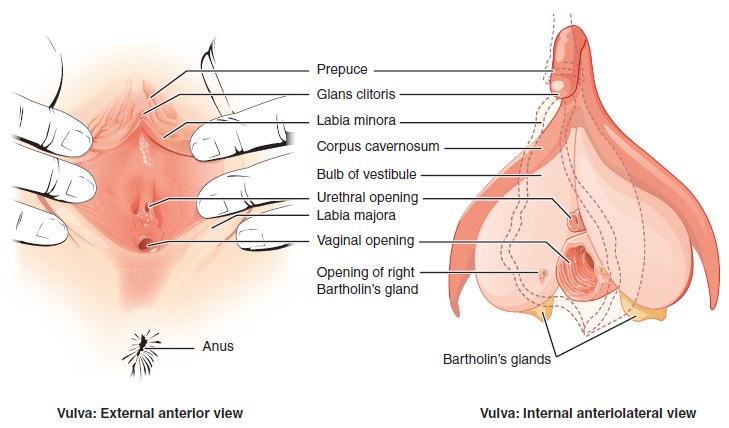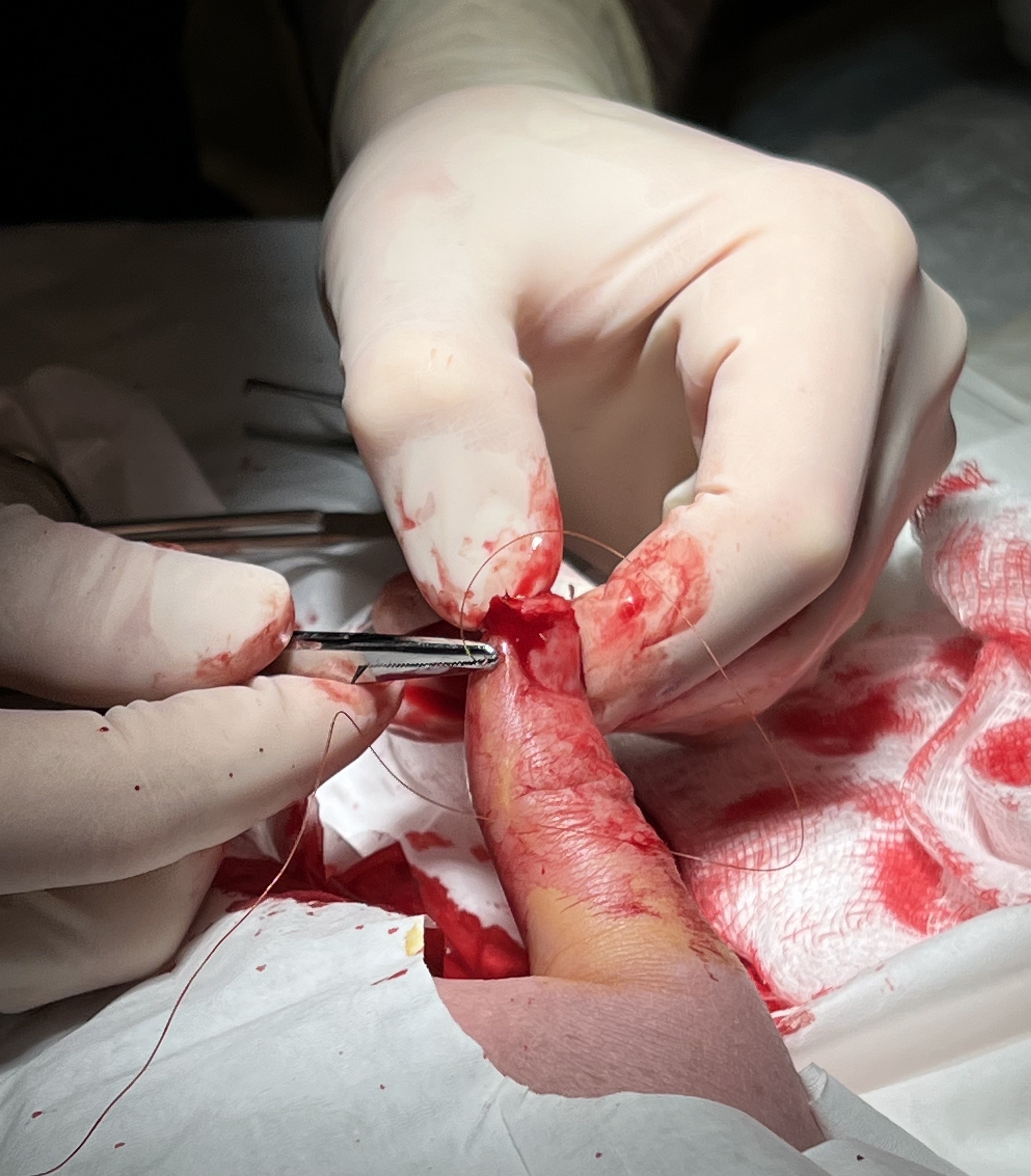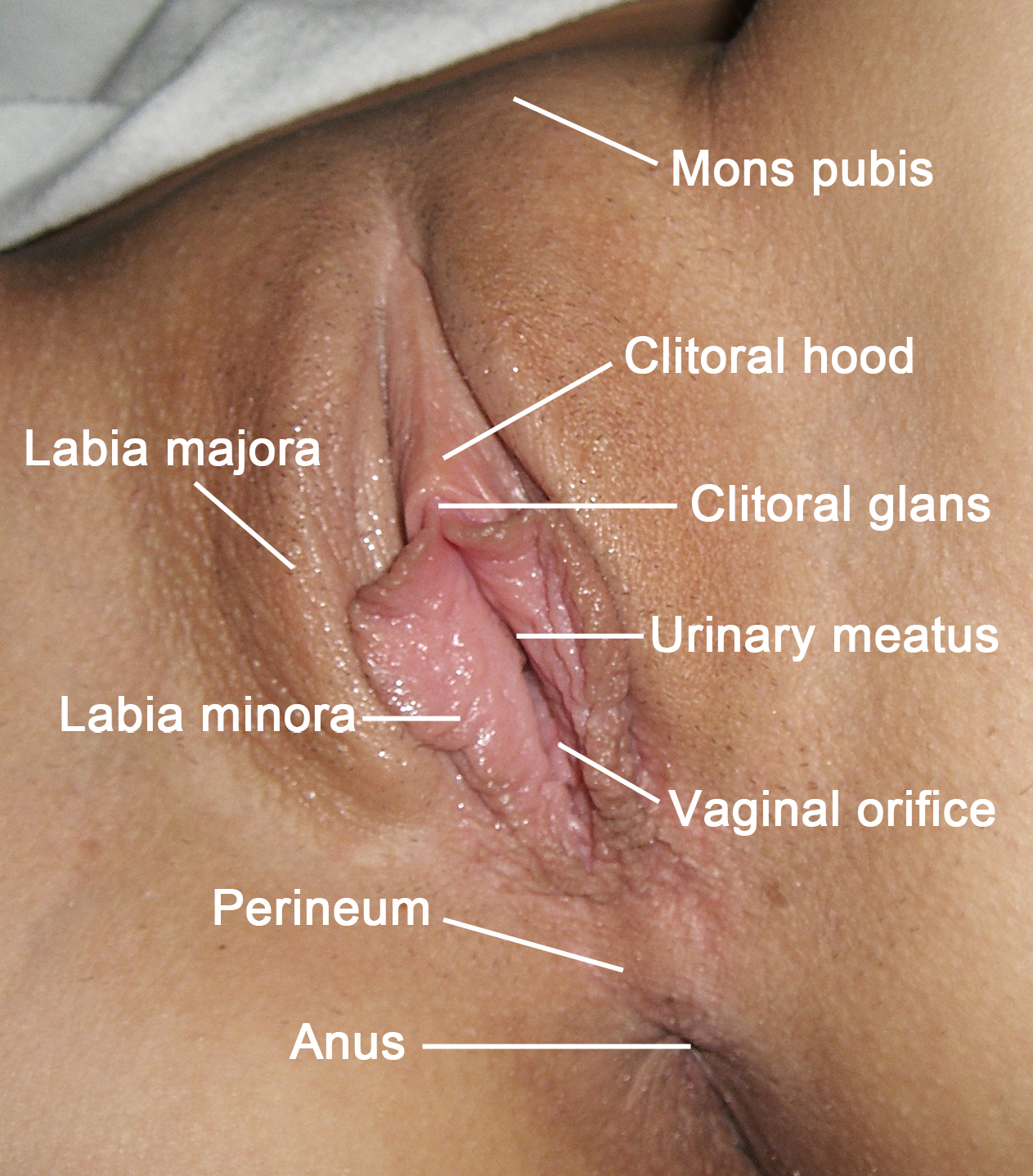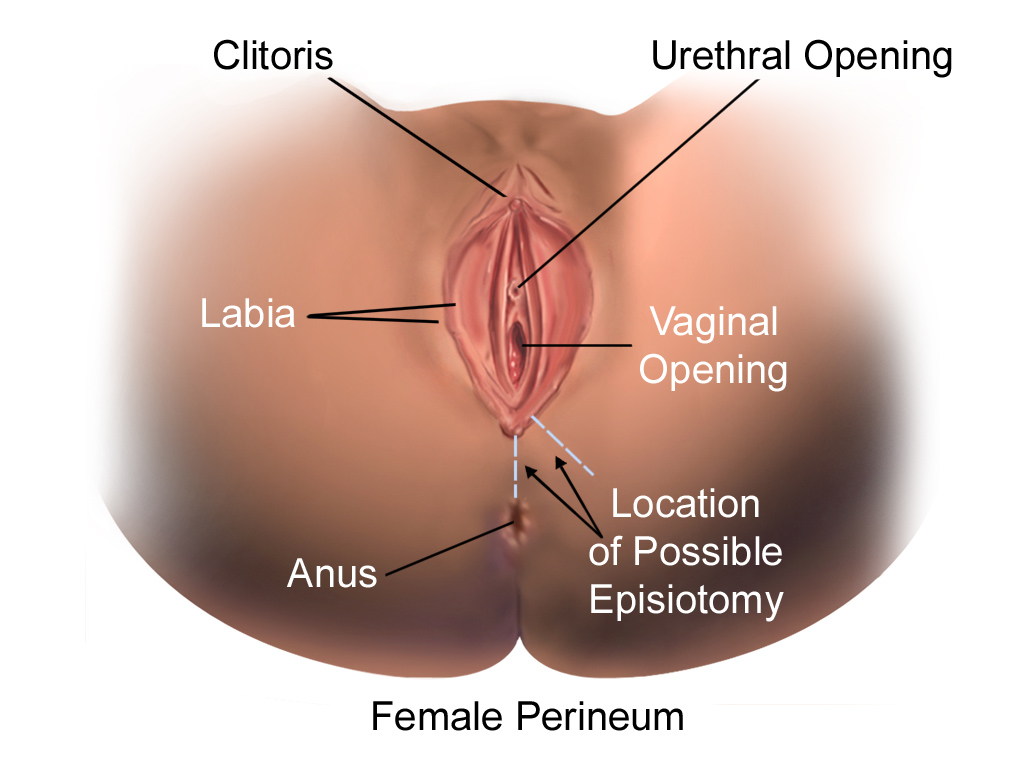|
Frenulum Of Labia Minora
The frenulum of labia minora (''fourchette'' or ''posterior commissure of the labia minora'') is a frenulum where the labia minora meet posteriorly. Pathology The fourchette may be torn during delivery due to the sudden stretching of the vulval orifice, or during copulation. To prevent this tearing in a haphazard manner, obstetricians and, less frequently, midwives may perform an episiotomy, which is a deliberate cut made in the perineum starting from the fourchette and continuing back along the perineum toward the anus. Sometimes this surgical cut may extend to involve the perineal body and thus reduce anal sphincter function. Thus some obstetricians have opted to perform a posterior-lateral cut in the perineum to prevent this potential complication from occurring. The fourchette may also be torn in acts of violence wherein forced entry occurs such as rape. When the fourchette is torn, the bleeding which ensues sometimes requires surgical suturing for containment. Etymology ... [...More Info...] [...Related Items...] OR: [Wikipedia] [Google] [Baidu] |
Vulva
The vulva (plural: vulvas or vulvae; derived from Latin for wrapper or covering) consists of the external sex organ, female sex organs. The vulva includes the mons pubis (or mons veneris), labia majora, labia minora, clitoris, bulb of vestibule, vestibular bulbs, vulval vestibule, urinary meatus, the Vagina#Vaginal opening and hymen, vaginal opening, hymen, and Bartholin's gland, Bartholin's and Skene's gland, Skene's vestibular glands. The urinary meatus is also included as it opens into the vulval vestibule. Other features of the vulva include the pudendal cleft, sebaceous glands, the urogenital triangle (anterior part of the perineum), and pubic hair. The vulva includes the entrance to the vagina, which leads to the uterus, and provides a double layer of protection for this by the folds of the outer and inner labia. Pelvic floor muscles support the structures of the vulva. Other muscles of the urogenital triangle also give support. Blood supply to the vulva comes from the t ... [...More Info...] [...Related Items...] OR: [Wikipedia] [Google] [Baidu] |
Rape
Rape is a type of sexual assault usually involving sexual intercourse or other forms of sexual penetration carried out against a person without their consent. The act may be carried out by physical force, coercion, abuse of authority, or against a person who is incapable of giving valid consent, such as one who is unconscious, incapacitated, has an intellectual disability, or is below the legal age of consent. The term ''rape'' is sometimes used interchangeably with the term ''sexual assault.'' The rate of reporting, prosecuting and convicting for rape varies between jurisdictions. Internationally, the incidence of rapes recorded by the police during 2008 ranged, per 100,000 people, from 0.2 in Azerbaijan to 92.9 in Botswana with 6.3 in Lithuania as the median. [...More Info...] [...Related Items...] OR: [Wikipedia] [Google] [Baidu] |
Perineal Tear Classification
A perineal tear is a laceration of the skin and other soft tissue structures which, in women, separate the vagina from the anus. Perineal tears mainly occur in women as a result of vaginal childbirth, which strains the perineum. It is the most common form of obstetric injury. Tears vary widely in severity. The majority are superficial and may require no treatment, but severe tears can cause significant bleeding, long-term pain or dysfunction. A perineal tear is distinct from an episiotomy, in which the perineum is intentionally incised to facilitate delivery. Episiotomy, a very rapid birth, or large fetal size can lead to more severe tears which may require surgical intervention. Anatomy In women, an anatomical area known as the perineum separates the opening of the vagina from that of the anus. Each opening is surrounded by a wall, and the anal wall is separated from the vaginal wall by a mass of soft tissue including: * The muscles of the anus (corrugator cutis ani, the interna ... [...More Info...] [...Related Items...] OR: [Wikipedia] [Google] [Baidu] |
Fourchette Piercing
A fourchette piercing is a female genital piercing. It is a piercing done at the rear rim of the vulva, in the area of frenulum labiorum pudendi. Many people do not have a pinchable flap of skin in the area, and are not suited for this piercing. Otherwise, placement and piercing tends to be relatively easy. Placement The fourchette piercing is most similar in location to the male guiche piercing A guiche piercing is a body piercing through the perineum. Guiche piercings are much more common in men than in women. Although a guiche normally runs perpendicular to the direction of the penis, lateral placements are possible. A series of gui .... It requires a pinchable flap of skin at the rear rim of the vulva. Piercers should not pierce into the vaginal tissue or vaginal canal as the vaginal tissue often rejects the piercing. Piercers Many piercers are not willing to do this piercing. The fourchette is a rare piercing which requires the proper anatomy. Many women do n ... [...More Info...] [...Related Items...] OR: [Wikipedia] [Google] [Baidu] |
Furcula
The (Latin for "little fork") or wishbone is a forked bone found in most birds and some species of non-avian dinosaurs, and is formed by the fusion of the two pink clavicles. In birds, its primary function is in the strengthening of the thoracic skeleton to withstand the rigors of flight. In birds The furcula works as a strut between a bird's shoulders, and articulates to each of the bird's scapulae. In conjunction with the coracoid and the scapula, it forms a unique structure called the triosseal canal, which houses a strong tendon that connects the supracoracoideus muscles to the humerus. This system is responsible for lifting the wings during the recovery stroke. As the thorax is compressed by the flight muscles during downstroke, the upper ends of the furcula spread apart, expanding by as much as 50% of its resting width, and then contracts. X-ray films of starlings in flight have shown that in addition to strengthening the thorax, the furcula acts like a spring in the pe ... [...More Info...] [...Related Items...] OR: [Wikipedia] [Google] [Baidu] |
Fork
In cutlery or kitchenware, a fork (from la, furca 'pitchfork') is a utensil, now usually made of metal, whose long handle terminates in a head that branches into several narrow and often slightly curved tines with which one can spear foods either to hold them to cut with a knife or to lift them to the mouth. History Bone forks have been found in archaeological sites of the Bronze Age Qijia culture (2400–1900 BC), the Shang dynasty (c. 1600–c. 1050 BC), as well as later Chinese dynasties.Needham (2000). ''Science and Civilisation in China. Volume 6: Biology and biological technology. Part V: Fermentations and food science.'' Cambridge University Press. Pages 105–110. A stone carving from an Eastern Han tomb (in Ta-kua-liang, Suide County, Shaanxi) depicts three hanging two-pronged forks in a dining scene. Similar forks have also been depicted on top of a stove in a scene at another Eastern Han tomb (in Suide County, Shaanxi). In Ancient Egypt, large forks were used as ... [...More Info...] [...Related Items...] OR: [Wikipedia] [Google] [Baidu] |
French Language
French ( or ) is a Romance language of the Indo-European family. It descended from the Vulgar Latin of the Roman Empire, as did all Romance languages. French evolved from Gallo-Romance, the Latin spoken in Gaul, and more specifically in Northern Gaul. Its closest relatives are the other langues d'oïl—languages historically spoken in northern France and in southern Belgium, which French ( Francien) largely supplanted. French was also influenced by native Celtic languages of Northern Roman Gaul like Gallia Belgica and by the ( Germanic) Frankish language of the post-Roman Frankish invaders. Today, owing to France's past overseas expansion, there are numerous French-based creole languages, most notably Haitian Creole. A French-speaking person or nation may be referred to as Francophone in both English and French. French is an official language in 29 countries across multiple continents, most of which are members of the ''Organisation internationale de la Francophonie'' ... [...More Info...] [...Related Items...] OR: [Wikipedia] [Google] [Baidu] |
Surgical Suture
A surgical suture, also known as a stitch or stitches, is a medical device used to hold body tissues together and approximate wound edges after an injury or surgery. Application generally involves using a needle with an attached length of thread. There are numerous types of suture which differ by needle shape and size as well as thread material and characteristics. Selection of surgical suture should be determined by the characteristics and location of the wound or the specific body tissues being approximated. In selecting the needle, thread, and suturing technique to use for a specific patient, a medical care provider must consider the tensile strength of the specific suture thread needed to efficiently hold the tissues together depending on the mechanical and shear forces acting on the wound as well as the thickness of the tissue being approximated. One must also consider the elasticity of the thread and ability to adapt to different tissues, as well as the memory of the threa ... [...More Info...] [...Related Items...] OR: [Wikipedia] [Google] [Baidu] |
Perineum
The perineum in humans is the space between the anus and scrotum in the male, or between the anus and the vulva in the female. The perineum is the region of the body between the pubic symphysis (pubic arch) and the coccyx (tail bone), including the perineal body and surrounding structures. There is some variability in how the boundaries are defined. The perineal raphe is visible and pronounced to varying degrees. The perineum is an erogenous zone. The word perineum entered English from late Latin via Greek περίναιος ~ περίνεος ''perinaios, perineos'', itself from περίνεος, περίνεοι 'male genitals' and earlier περίς ''perís'' 'penis' through influence from πηρίς ''pērís'' 'scrotum'. The term was originally understood as a purely male body-part with the perineal raphe seen as a continuation of the scrotal septum since masculinization causes the development of a large anogenital distance in men, in comparison to the corresponding lack ... [...More Info...] [...Related Items...] OR: [Wikipedia] [Google] [Baidu] |
Labia Minora
The labia minora (Latin for 'smaller lips', singular: ''labium minus'', 'smaller lip'), also known as the inner labia, inner lips, vaginal lips or nymphae are two flaps of skin on either side of the human vaginal opening in the vulva, situated between the labia majora (Latin for 'larger lips'; also called outer labia, or outer lips). The labia minora vary widely in size, color and shape from individual to individual. The labia minora are homologous to the male urethral surface of the penis. Structure and functioning The labia minora extend from the clitoris obliquely downward, laterally, and backward on either side of the vulval vestibule, ending between the bottom of the vulval vestibule and the labia majora. The posterior ends (bottom) of the labia minora are usually joined across the middle line by a flap of skin, named the frenulum of labia minora or fourchette. On the front, each lip forks dividing into two portions surrounding the clitoris. The upper part of each lip pas ... [...More Info...] [...Related Items...] OR: [Wikipedia] [Google] [Baidu] |
Episiotomy
Episiotomy, also known as perineotomy, is a surgical incision of the perineum and the posterior vaginal wall generally done by a midwife or obstetrician. Episiotomy is usually performed during second stage of labor to quickly enlarge the opening for the baby to pass through. The incision, which can be done from the posterior midline of the vulva straight toward the anus or at an angle to the right or left (medio-lateral episiotomy), is performed under local anesthetic (pudendal anesthesia), and is sutured after delivery. Its routine use is no longer recommended, as perineal massage is an alternative painless method of enlarging the opening for baby. Despite this, it is one of the most common surgical procedures specific to women. In the United States, as of 2012, it was performed in 12% of vaginal births. It is still widely practiced in many parts of the world, including Korea, Japan, Taiwan, China, and Spain. Uses Vaginal tears can occur during childbirth, most often at th ... [...More Info...] [...Related Items...] OR: [Wikipedia] [Google] [Baidu] |
Midwife
A midwife is a health professional who cares for mothers and newborns around childbirth, a specialization known as midwifery. The education and training for a midwife concentrates extensively on the care of women throughout their lifespan; concentrating on being experts in what is normal and identifying conditions that need further evaluation. In most countries, midwives are recognized as skilled healthcare providers. Midwives are trained to recognize variations from the normal progress of labor and understand how to deal with deviations from normal. They may intervene in high risk situations such as breech births, twin births, and births where the baby is in a posterior position, using non-invasive techniques. For complications related to pregnancy and birth that are beyond the midwife's scope of practice, including surgical and instrumental deliveries, they refer their patients to physicians or surgeons. In many parts of the world, these professions work in tandem to provide ... [...More Info...] [...Related Items...] OR: [Wikipedia] [Google] [Baidu] |







